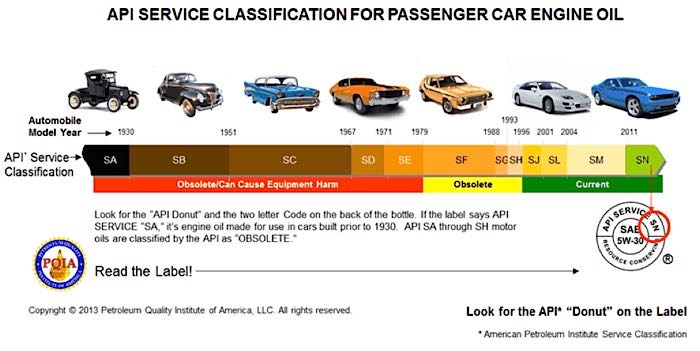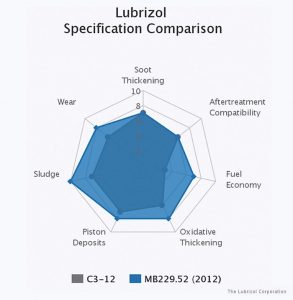We live in a changing world, and this also holds true for the automotive industry. New powertrains are coming to the market all the time, spurred both by internal competition and ever-tightening fuel efficiency and emissions standards. Common sense tells us that, for each individual engine model, the best performing oil would be the one that has been specifically optimized and tested for that particular engine. This would drive product segregation with numerous — often self-conflicting — OEM requirements. This would create a tremendous challenge for lubricant companies as they would be forced to maintain a myriad of different products, which would drive up manufacturing costs and complicate logistics. This explains why the lubricant industry leans toward product unification, trying to maintain as few products as possible with as broad OEM coverage as possible.
In the U.S., the service rating of passenger car and commercial automotive motor oils is dictated by the American Petroleum Institute (API). (See chart below.) When motor oil is assigned a certain service category, it means that the oil meets certain OEM quality and performance standards.
 In Europe, this task is performed by the Association des Constructeurs Européens d’Automobiles (ACEA), an organization representing all major European motor vehicle manufacturers. Based on oil test sequences developed by ACEA, lubricant manufacturers make performance claims for their products. For obvious reasons, ACEA performance claims are more relevant for European cars, and, in many cases, ACEA claims are more restrictive and supersede API claims. However, since ACEA and API claims are based on different test sequences, they are not directly comparable.
In Europe, this task is performed by the Association des Constructeurs Européens d’Automobiles (ACEA), an organization representing all major European motor vehicle manufacturers. Based on oil test sequences developed by ACEA, lubricant manufacturers make performance claims for their products. For obvious reasons, ACEA performance claims are more relevant for European cars, and, in many cases, ACEA claims are more restrictive and supersede API claims. However, since ACEA and API claims are based on different test sequences, they are not directly comparable.
 In general, both ACEA and API claims — such as ACEA C3 or API SN — guarantee no more than an adequate baseline performance level, which may or may not be sufficient for your customers’ particular cars. Here come individual OEM specifications that supersede both ACEA and API claims. For instance, Daimler’s new MB229.52 specification (see image at right) exceeds the baseline ACEA C3 specification in nearly all respects. In other words, an oil meeting the MB229.52 standard can safely be used in any car where the owner’s manual lists ACEA C3 as a suitable motor oil. But not any ACEA C3 oil is safe to use in your customer’s new Mercedes! Of course, it is highly unlikely that an oil claiming only an ACEA C3 performance level will ruin your customer’s Mercedes engine instantly. It probably won’t. However, to be on a safe side, it is highly recommended to respect the individual OEM requirements, and it is only in this case that you are covered by the manufacturer’s warranty.
In general, both ACEA and API claims — such as ACEA C3 or API SN — guarantee no more than an adequate baseline performance level, which may or may not be sufficient for your customers’ particular cars. Here come individual OEM specifications that supersede both ACEA and API claims. For instance, Daimler’s new MB229.52 specification (see image at right) exceeds the baseline ACEA C3 specification in nearly all respects. In other words, an oil meeting the MB229.52 standard can safely be used in any car where the owner’s manual lists ACEA C3 as a suitable motor oil. But not any ACEA C3 oil is safe to use in your customer’s new Mercedes! Of course, it is highly unlikely that an oil claiming only an ACEA C3 performance level will ruin your customer’s Mercedes engine instantly. It probably won’t. However, to be on a safe side, it is highly recommended to respect the individual OEM requirements, and it is only in this case that you are covered by the manufacturer’s warranty.
Courtesy of Boris Zhmud, Head of R&D, Bizol Lubricants













